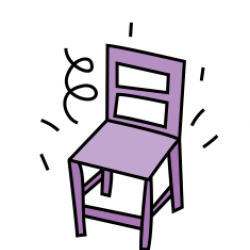Source Institutions
Source Institutions
Add to list Go to activity
Activity link broken? See if it's at the internet archive

In this activity about center of gravity (page 23 of PDF), learners investigate how the body adjusts to the force of gravity to remain balanced. In part 1, learners use different amounts of weight and meter sticks to explore balance and stability. In part 2, learners will conduct two experiments to explore their own centers of gravity. This guide includes background information, extensions, and data sheets.
- 5 to 10 minutes
- 1 to 2 hours
- $1 - $5 per group of students
- Ages 6 - 11
- Activity, Experiment/Lab Activity, Lesson/Lesson Plan
- English
Quick Guide
Materials List (per group of students)
- heavy-weight balance or bathroom scale
- poultry scissors or small saw
- 2 bathroom-sized paper cups
- 6-10 heavy, stackable items (bricks, cans, reams of paper or books)
- 1/3 cup dried beans
- sheet of corrugated cardboard
- 1 long bone from a chicken leg or thigh that has been cooked and cleaned
- magnifiers
- copy of "Balancing Act'" and "Balancing You" student sheets
Subjects
-
Life Sciences
-
Human Body
- Muscles and Skin
-
Human Body
-
Mathematics
-
Data Analysis and Probability
- Data Analysis
- Data Collection
- Data Representation
- Measurement
- Reasoning and Proof
-
Data Analysis and Probability
-
Physical Sciences
-
Motion and Forces
- Gravity
- Center of Gravity
-
Structure and Properties of Matter
- Mass and Weight
-
Motion and Forces
-
The Nature of Science
-
The Scientific Process
- Conducting Investigations
- Gathering Data
- Formulating Explanations
- Communicating Results
-
The Scientific Process
Informal Categories
- Physical Activity
Audience
To use this activity, learners need to:
- see
- read
- touch
Learning styles supported:
- Involves teamwork and communication skills
- Involves hands-on or lab activities
Other
This resource is part of:
Access Rights:
- Free access
By:
- National Space Biomedical Research Institute; Chang, Kimberly ; Moreno, Nancy P. ; Tharp, Barbara Z.
Rights:
- All rights reserved, Baylor College of Medicine, 2000
Funding Source:
- NASA, NCC9-58
